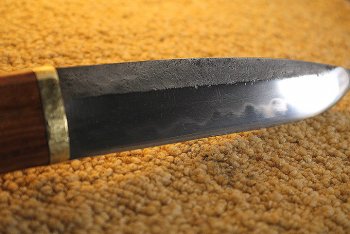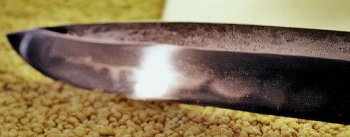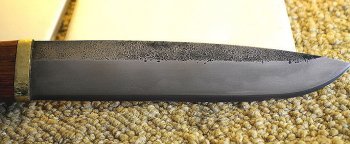kevin - the professor
Well-Known Member
Hello Everyone,
It has been about 6 months since I have made any knives. Marriage, moving, new shop, etc. In fact, this knife was made without electricity (except for the drill press on the fittings). The new shop has crappy wiring, and I can't use my big tools without a generator. I didn't have the generator when I did the work on this one.
Hope you like. It is 1075, with a 6" blade. Kinda big for this style, but it was what I had to start with, and I just forged what I had.
The new shop is coming together. Hopefully, a lot more to come, soon!






20edited.jpg" "http://i579.photobucket.com/albums/...ife no electricity edited/IMG_2024 edited.jpg" http://i579.photobucket.com/albums/...ife no electricity edited/IMG_2030 edited.jpg" "http://i579.photobucket.com/albums/...ife no electricity edited/IMG_2033 edited.jpg" "http://i579.photobucket.com/albums/...ife no electricity edited/IMG_2036 edited.jpg" http://i579.photobucket.com/albums/...e no electricity edited/IMG_2026 2 edited.jpg"
It has been about 6 months since I have made any knives. Marriage, moving, new shop, etc. In fact, this knife was made without electricity (except for the drill press on the fittings). The new shop has crappy wiring, and I can't use my big tools without a generator. I didn't have the generator when I did the work on this one.
Hope you like. It is 1075, with a 6" blade. Kinda big for this style, but it was what I had to start with, and I just forged what I had.
The new shop is coming together. Hopefully, a lot more to come, soon!






20edited.jpg" "http://i579.photobucket.com/albums/...ife no electricity edited/IMG_2024 edited.jpg" http://i579.photobucket.com/albums/...ife no electricity edited/IMG_2030 edited.jpg" "http://i579.photobucket.com/albums/...ife no electricity edited/IMG_2033 edited.jpg" "http://i579.photobucket.com/albums/...ife no electricity edited/IMG_2036 edited.jpg" http://i579.photobucket.com/albums/...e no electricity edited/IMG_2026 2 edited.jpg"

